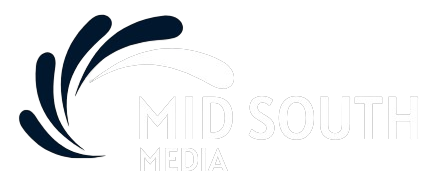
“Many of the leading publishers do not have a single brown or Black marketing, editing or publicity person. They are committed to institutional change and tailoring their offering to undeserved communities… for now. But they have to deal with reality now, have virtual coffees with the Black pros who have taken the baton from the Toni Morrisons in publishing and have been doing the work.”
–Yona Deshommes, Riverchild Media LLC
The publishing world is the tastemaker of the tastemaker. Many times the blueprint to The Culture is drafted by the publishing industry. Along with journalism, publishing is where the story we tell ourselves is drafted into manuscript format.
*
What an incredibly fertile opportunity to do what you have done with your various platforms—insist on telling our stories. As a matter of fact, you and I have had sort of an ongoing 30 year dialogue about what I like to call “the power of definition” and the space where so much of your work focuses on is defining us for us by us. To your point, our exceptionalism is our modus operandi. We really have to be exceptional to survive, master and exceed the standards of the industries in which we make a living.
In American publishing circles, we have historically experienced 30-year cycles of peaks of interest in African American books, authors, and writing—each lasting plus or minus 12 years. Briefly, the early 1900s found African American cultural interest in the work of Paul Laurence Dunbar and Charles Chestnut. The delayed 1920s and early 1930s embraced the music, art, and literature of the Harlem Renaissance. The Black Arts Movement of the 1960s translated the invasive, disruptive and powerful rhetoric of “Black Power” into digestible, visual form. A resurgence of interest in Black literature again flourished with the 1990s publication of Terry McMillan’s blockbuster, Waiting to Exhale.
With too few exceptions, the absence of black Diaspora stories had been standard operating procedure in publishing houses.
Is it possible that within this obvious continuity of expression, we simply stopped writing? Might it be possible that we collectively “dropped the mic,” walking away from the urgency of telling our stories? I think that is most unlikely. In fact, in my work throughout the years, I have discovered countless books by African American authors that—as with most published titles—just did not find their way to the public arena.
This is so far removed from the truth. African American publishers have served readers for decades. John Johnson’s Ebony and Jet magazines long served as cultural lifelines. Haki Madhubuti’s Third World Press in Chicago recently heralded its 50th year in book publishing. Black Classic Press publisher Paul Coates (father of National Book Award-winning author Ta-Nehisi Coates) has published award-winning author Walter Mosley.
Wade and Cheryl Hudson, founders of JustUs Books, an African American children’s book publisher, are celebrating 30-plus years of service to readers. Kassahun Checole, publisher of Africa World Press and Red Sea Press, founded these two world-renowned publishing and distribution houses in 1983 and 1985, respectively, to focus on African and African American issues. These sister presses have since published over 1,400 titles. As a group, these publishers hold the space for African American publishing from which hundreds have been inspired into publishing enterprises.
The perception of absence, however, remains persistent. I recently read an article online in the New York Times focusing on African Americans within the publishing industry. Five individuals were highlighted—a marketing director, an editorial director, two literary agents, and a bookseller. They each spoke eloquently about their vision for African American books. The elephant in the room was the absence of African American publishers.
Ours is a continuation of those movements and voices that precede us—those ancestors’ shoulders upon which we stand.
The publishing industry’s “shiny object” had always been the lure of its highly-coveted distribution network. In a world of all things digital, however, even those distribution networks are being disrupted. The Author Channel, a streaming platform that I am producing on the Exposure on Demand TV Network through ROKU, Amazon Fire Stick, and Apple TV, gives readers daily access to books, authors, and publishers to over 160 million households, daily. Rather than serving as a competitor to still-viable distribution modes, digital streaming adds a highly-desirable access and delivery line directly to the ever-mobile reader.
I really feel that we seeded the Global I Aam or Global International African Arts Movement in 2014 at the Harlem Book Fair at the Schomburg Center for Black Culture. Is it possible to return to the formulaic ingredients that gave rise to the Harlem Renaissance—a space where our intellectuals and artists set the tone of global culture?
And there is the fresh vanguard, if you will, of culture workers and outliers bringing the unseen and unheard to the center of our global culture—specifically people such as memoirist Lesley-Ann Brown, painter and philanthropist Danny Simmons, America’s global podcaster Tori Reid, Afrotopian Ingrid Lafleur, Resistance founder Sevan Bomar, novelist Morowa Yejide, Bay Area activists and painters Malik and Karen Seneferu, San Diego’s Khalif Price, jeweler Hanna Wagari, culturalist Darnell Moore or Princeton’s Dr. Imani Perry and Dr. Eddie Glaude, Jr.
__________________________________
Patrick A. Howell’s book, Dispatches From the Vanguard, is available from Repeater Books.

